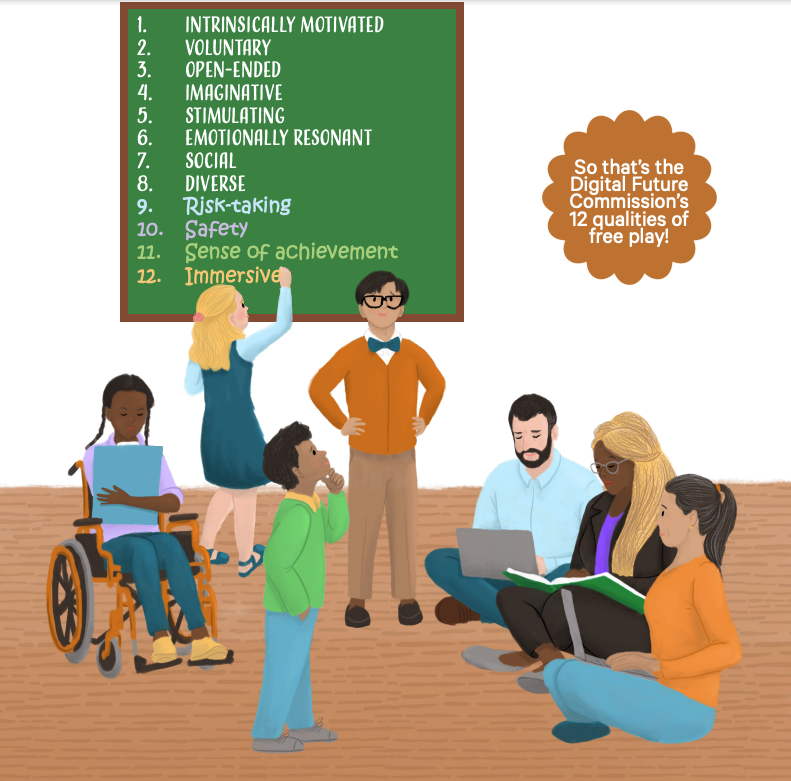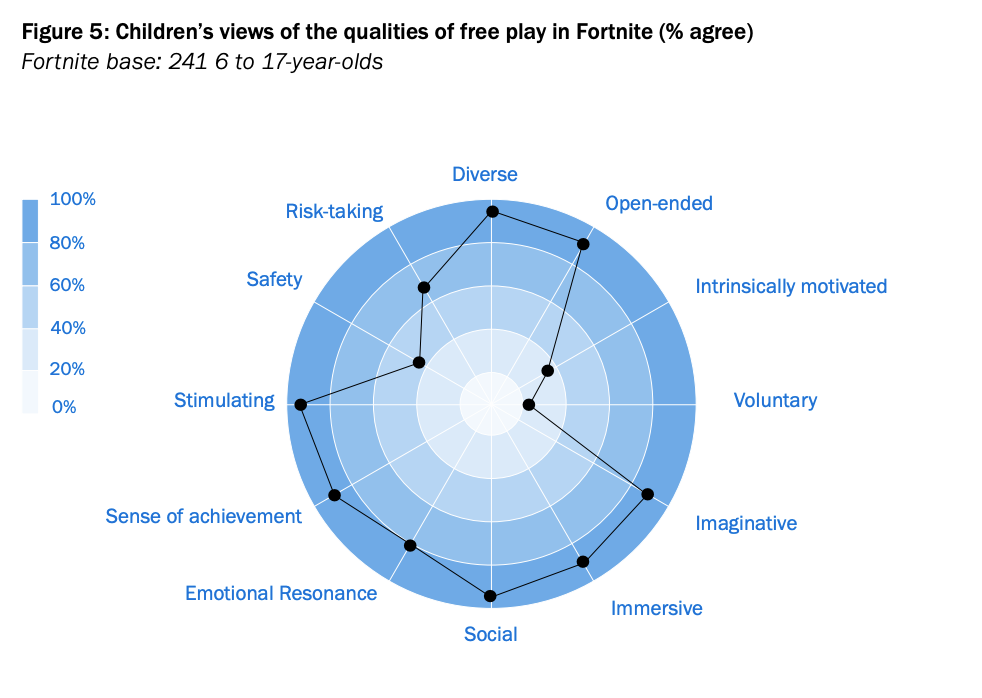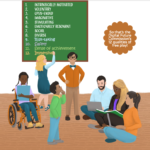
I have been reading the Parenting for a Digital Future blog for quite some time now. Reading the newest post by Kruakae Pothong and Sonia Livingstone—”What works for children’s play in a digital world and what needs to change?“—took me much deeper into thoughts about play where I already spend a lot of time. And it reaffirmed my appreciation for the goals and efforts of the UK’s Digital Futures Commission where Professor Livingstone leads the research team.
I especially appreciate that the team engages children and teens about what works and what doesn’t work for them in digital spaces. They also do extensive interviews with parents, caregivers, educators, and industry and academic experts. From the blog post, I found my way to several documents including Playful by Design: A Vision of Free Play in a Digital World, their report containing in-depth case studies on Fortnite, Minecraft, Roblox, Nintendo Wii, TikTok, WhatsApp, YouTube, and Zoom. based on the results of the surveys. In the foreword they write:
“Children and young people could not be clearer. They want digital products designed to enhance the qualities of play and at the same time want those aspects of design that are exploitative or invasive to be dialed down. Neither they nor we want a completely ‘wholefood experience’, nor to turn back the clock to an offline world. As the report shows, whether or not children can identify specific features such as autoplay, automated notifications, in-app purchases or nudges to share, they feel the pressure to stay on even when they want to stop and deplore that they cannot explore freely or experiment with diverse experiences without being subject to commercial pressures or the loss of personal safety.”
And now comes the interactive part…I invite you to open the full report and scroll to page 40 so you can follow along with my description of the section I found most intriguing and useful to share with the game players or budding designers in your life. It is one of the best conversation catalysts I have found so far on understanding what makes particular games fun to play and what could make them better for the kids who play them.
Beginning on page 40 in the report, Livingstone and Pothong present the eight case studies of Fortnite, Minecraft, Roblox, Nintendo Wii, TikTok, WhatsApp, YouTube, and Zoom. For each case study, they present a “spider diagram” that maps their “12 qualities of play” (9–12 were added to the original list of 8 qualities by kids) and what children report about how each platform does. Here’s the diagram for Roblox (page 41):

Immediately following the diagrams for each platform, they break down the results of what kids reported by age and gender. Following this breakdown, they give a summary of what the experts have to say…it’s nuanced, definitely not black and white. And it is fascinating—24 very informative pages giving a kids’-eye-view of Fortnite, Minecraft, Roblox, Nintendo Wii, TikTok, WhatsApp, YouTube, and Zoom—mostly visual, well worth your time to help you go beyond simplistic analyses of online games and platforms. And it’s a great exercise in data fluency.
Hats off to Livingstone and Pothong. We look forward to the next installments of this project—beneficial uses of education data, and guidance for innovators.

Additional Reading
Playful by Design report too long (TL;DR) at 100 pages?
The short Playful by Design teaser/summary is for you. It offers case studies of Roblox and Zoom based on interviews with kids and adults in a very visual format, offering a good conversation catalyst with any Roblox and/or Minecraft players in your home or class.
Fortnite players in the house? Read and discuss How does Playful by Design work in practices? The case of Fortnite.
Why does free play matter in a digital world? presents the overall Playful by Design recommendations.


